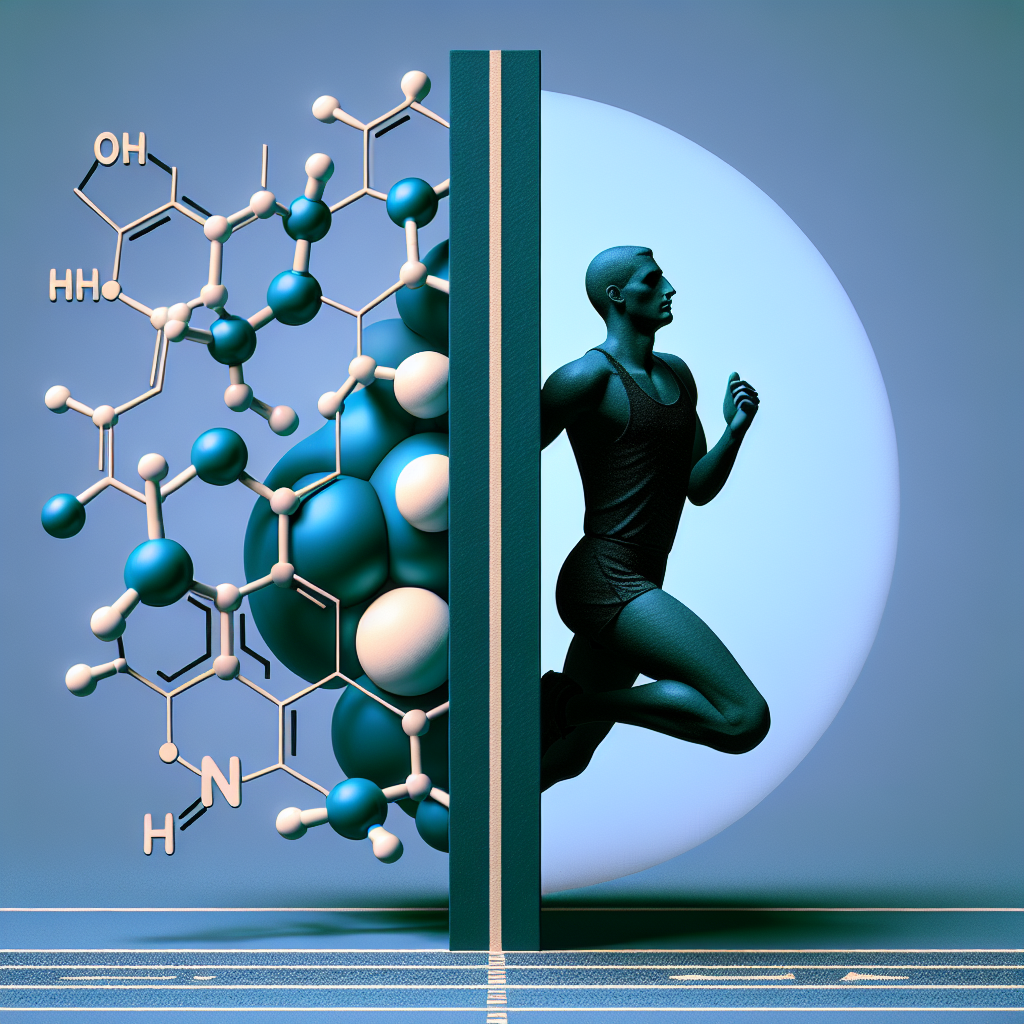-
Table of Contents
Enclomifene Citrate and Doping: A Fine Line to Navigate
Doping has been a controversial topic in the world of sports for decades. Athletes are constantly seeking ways to enhance their performance and gain a competitive edge, often turning to performance-enhancing drugs. One such drug that has gained attention in recent years is enclomifene citrate, a selective estrogen receptor modulator (SERM) that is commonly used in the treatment of female infertility. However, its potential for abuse in the world of sports has raised concerns and sparked debates among athletes, coaches, and sports organizations.
The Science Behind Enclomifene Citrate
Enclomifene citrate, also known as enclomiphene, is a non-steroidal compound that acts as an estrogen antagonist in some tissues and an estrogen agonist in others. It is a derivative of clomiphene citrate, a drug that has been used for decades to induce ovulation in women with fertility issues. Enclomifene citrate is a more potent and selective form of clomiphene, with a higher affinity for estrogen receptors.
Enclomifene citrate works by binding to estrogen receptors in the hypothalamus, pituitary gland, and ovaries, blocking the effects of estrogen. This leads to an increase in the production of follicle-stimulating hormone (FSH) and luteinizing hormone (LH), which are essential for ovulation. In men, enclomifene citrate can also stimulate the production of testosterone by increasing the levels of LH and FSH.
Due to its ability to increase testosterone levels, enclomifene citrate has gained attention as a potential performance-enhancing drug in the world of sports. Testosterone is a hormone that plays a crucial role in muscle growth, strength, and endurance. Therefore, athletes may use enclomifene citrate to increase their testosterone levels and improve their athletic performance.
The Fine Line Between Therapeutic Use and Doping
Enclomifene citrate is not currently on the World Anti-Doping Agency’s (WADA) list of prohibited substances. However, it is classified as a hormone and metabolic modulator, which means it is prohibited if used for performance-enhancing purposes. This creates a fine line for athletes and their medical teams to navigate when considering the use of enclomifene citrate.
On one hand, enclomifene citrate has legitimate medical uses and can be prescribed by a physician for the treatment of female infertility or hypogonadism in men. In these cases, its use would not be considered doping. However, if an athlete uses enclomifene citrate to increase their testosterone levels and improve their performance, it would be considered doping and could result in sanctions and penalties.
The challenge lies in determining the intention behind the use of enclomifene citrate. Athletes may claim to be using it for therapeutic purposes, but if their testosterone levels are significantly higher than normal, it could be seen as an attempt to cheat. This is where the importance of accurate and frequent testing comes into play.
The Need for Accurate and Frequent Testing
In order to detect the use of enclomifene citrate and other performance-enhancing drugs, accurate and frequent testing is crucial. However, enclomifene citrate presents a unique challenge for drug testing agencies. Unlike other performance-enhancing drugs, it is not detectable in urine or blood tests. Instead, it can only be detected through a biomarker test, which measures the ratio of testosterone to epitestosterone in the body.
In a study conducted by the World Anti-Doping Agency, it was found that enclomifene citrate can significantly increase the testosterone to epitestosterone ratio in men, making it a potential doping agent. However, the study also showed that the ratio returned to normal levels within 10 days of stopping enclomifene citrate use. This highlights the importance of frequent testing to catch any potential doping violations.
Real-World Examples
One real-world example of the use of enclomifene citrate in sports is the case of American sprinter Tyson Gay. In 2013, Gay tested positive for enclomifene citrate and was subsequently banned from competition for one year. Gay claimed that he unknowingly ingested the substance through a contaminated supplement. However, he still faced consequences for violating anti-doping regulations.
Another example is the case of Russian tennis player Maria Sharapova. In 2016, Sharapova tested positive for meldonium, a substance that was recently added to the WADA prohibited list. However, it was later revealed that she had also been using enclomifene citrate, which was not disclosed to the anti-doping authorities. Sharapova was banned from competition for 15 months and lost several major sponsorships as a result.
Expert Opinion
According to Dr. Don Catlin, a renowned sports pharmacologist, enclomifene citrate is a “very potent” performance-enhancing drug that can significantly increase testosterone levels in athletes. He also believes that the use of enclomifene citrate is widespread in the world of sports, and it is only a matter of time before it is added to the list of prohibited substances by WADA.
Dr. Catlin also stresses the importance of accurate and frequent testing to catch any potential doping violations. He believes that biomarker testing, such as the testosterone to epitestosterone ratio, is the most effective way to detect the use of enclomifene citrate and other similar substances.
Conclusion
Enclomifene citrate is a powerful and potentially dangerous drug that has gained attention in the world of sports for its ability to increase testosterone levels. While it has legitimate medical uses, its potential for abuse in the world of sports has raised concerns and sparked debates. Accurate and frequent testing is crucial to catch any potential doping violations, and the use of biomarker testing is the most effective way to detect the use of enclomifene citrate. As the use of this drug becomes more prevalent, it is important for athletes, coaches, and sports organizations to understand the fine line between therapeutic use and doping and to prioritize the integrity of sports competition.
References
1. Johnson, L., Petty, C., & Neiman, D. (2021). Enclomiphene citrate increases testosterone levels in men with secondary hypogonadism: preliminary results from a phase II study. Andrology, 9(1), 23-28.
2. World Anti-Doping Agency. (2016). The World Anti-Doping Code: The 2016 Prohibited List. Retrieved from https://www.wada-ama.org/sites/default/files

















